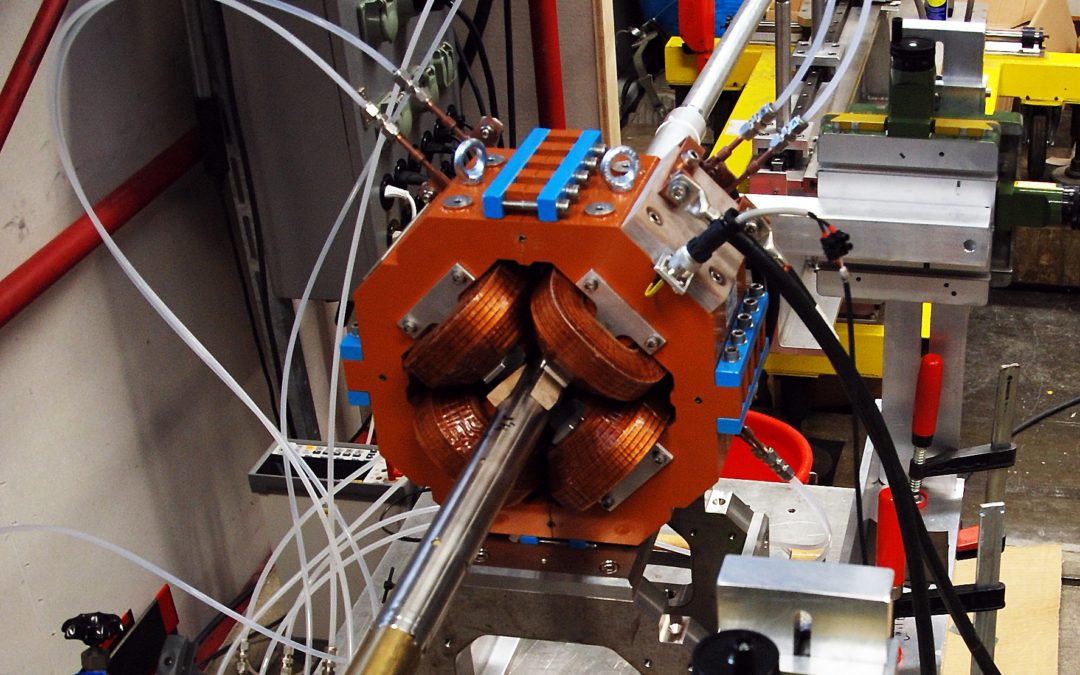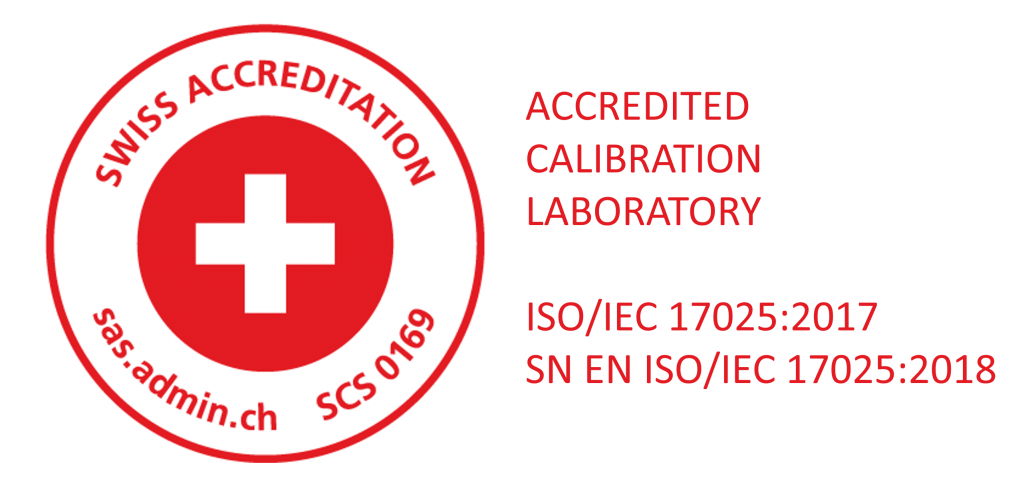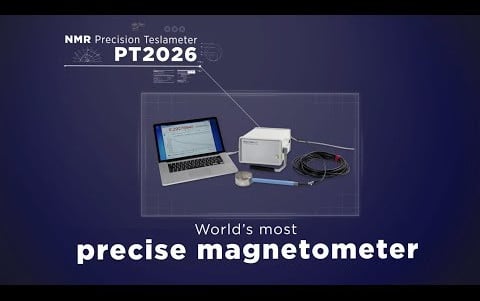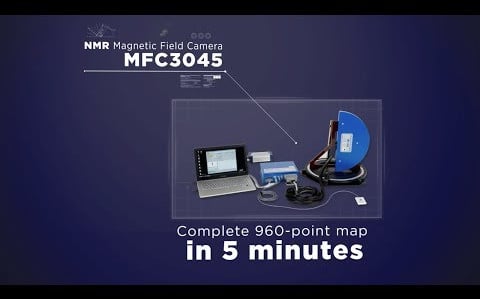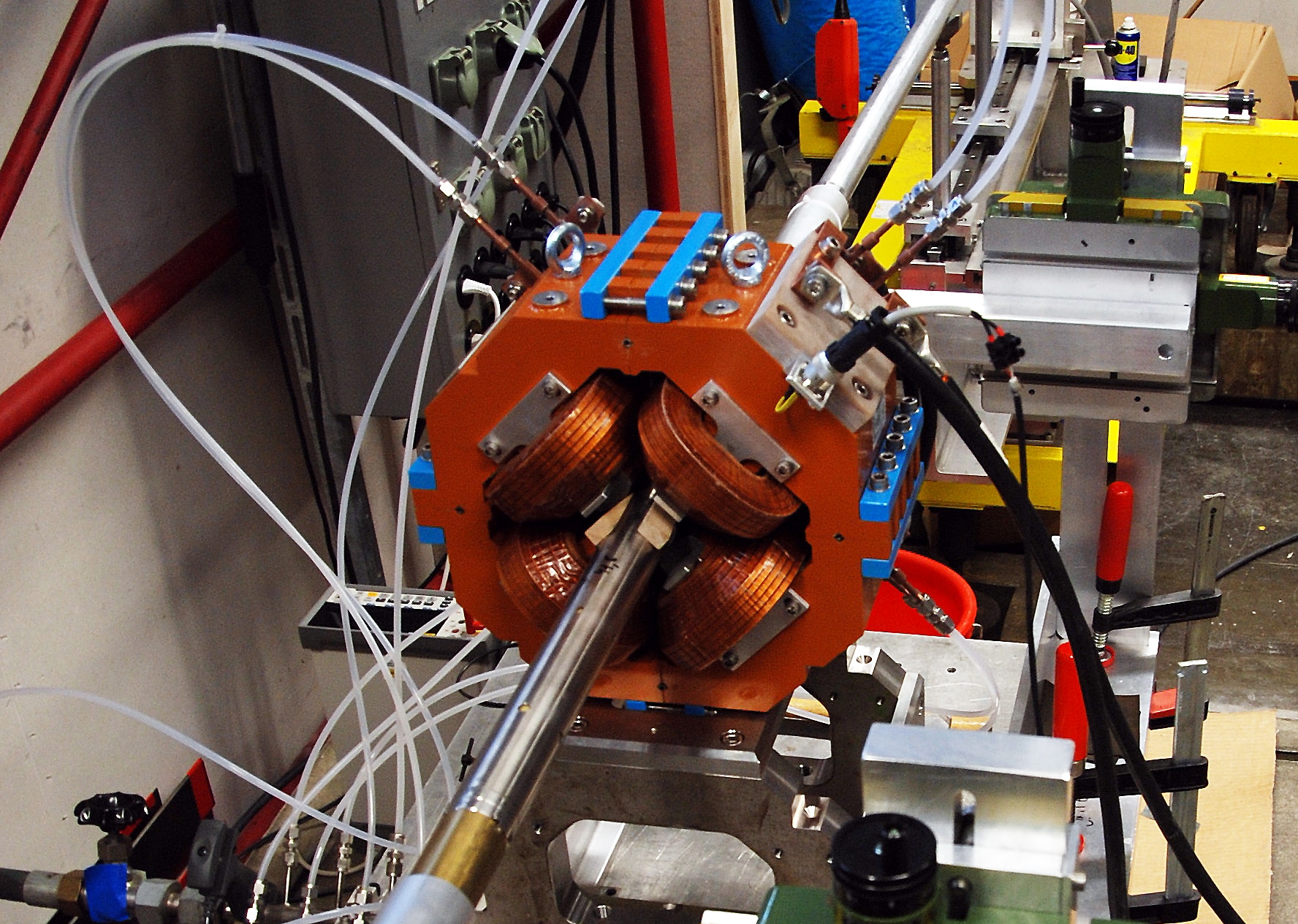
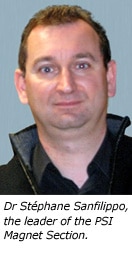
Magnetic issues are one of the important concerns: hundreds of magnetic elements (solenoids, quadrupoles, dipoles, steerers, and undulators) will be positioned in the electron acceleratorParticle accelerators were developed by physicists to study the elementary nature of matter. Nowadays, they are usually immense, highly international... More (injector, linacs) and in the two X-ray free-electron laser beamlines. The magnets are designed to guide and focus the beam, and the undulators will drive the FEL lasing process. Room temperature magnets and undulators made with permanent magnetA magnet using the magnetism "locked into" the structure of a suitable material rather than a current in a coil.... More technology will be used. “Designing and measuring them is very challenging, because of the small size of the quadrupoleIn accelerators, a magnet with four poles, yielding a highly inhomogeneous magnetic field. See focusing magnet and multipole magnet. More apertures (down to 10 mm diameter) and the required tolerance on the field quality and magnetic alignment,” points out Dr. Stéphane Sanfilippo, the leader of the PSI Magnet Section.
Quadrupoles: from traveling to the rotation
The construction and measurement of the magnets for the injector module, completed in 2010, was a milestone for the feasibility of the entire project. A series of 45 mm diameter quadrupoles with a field gradientIn this context, gradient refers to the spatial variation of the magnetic field. More of 25 T/m, various dipoles with magnetic fields ranging from 0.2 to 0.4 T, and solenoids with magnetic fields ranging from 0.1 to 0.35 T were built and measured. The following tight specifications had to be fulfilled for the magnets delivered for the injector: integrated field strength accurate to 10-4, quadrupoleIn accelerators, a magnet with four poles, yielding a highly inhomogeneous magnetic field. See focusing magnet and multipole magnet. More harmonic field quality accurate to 10-3, solenoidA magnet in the form of a cylindrical coil, concentrating the field inside the cylinder. See Bore. More magnetic axis accurate to 0.1 mm.
The integrated field strength, the magnetic field maps and the magnetic axis were measured with mobile Hall probes traveling along the axis of the magnets (dipole, solenoids, and quadrupoles). The Hall probeThe actual sensor that is placed in the magnetic field. The NMR probe contains the NMR sample; the Hall probe... More magnetic measurement system, developed by the PSI, ensured the determination of the magnetic field with an accuracyAccuracy is how close a measure conforms to reality. Even if our NMR Teslameter displays 9 digits, we claim 5... More of 0.1 GaussThe cgs unit of magnetic flux density. Officially declared to be outdated, it is still popular for low fields. Equal... More. The harmonic field quality of quadrupoles was measured by a fluxThe magnetic flux density, B, integrated over an area. The voltage induced in a coil is proportional to the flux... More integrating probeThe actual sensor that is placed in the magnetic field. The NMR probe contains the NMR sample; the Hall probe... More (mole) constructed by CERN (Geneva, Switzerland), and purchased by Paul Scherrer Institute in January 2010. The 750 mm long mole has an outside diameter of 41 mm and consists of 5 coils, mounted side by side, allowing accurate harmonic measurements thanks to dipole and quadrupoleIn accelerators, a magnet with four poles, yielding a highly inhomogeneous magnetic field. See focusing magnet and multipole magnet. More compensation. The reproducibility of the system was about 10-4 for the main field and at the level of ppm’s for the harmonics at 17 mm.
The challenge for the future will be accurate field quality and magnetic axis measurements for the other quadrupoles needed around the various sections of SwissFEL, from the linear accelerators to the X-ray beamlines (165 in total). They are smaller than those in the injector, with inner diameters of 24 mm in the linacs, and even 10 mm in the undulator lines.“Rotating coils capable of measuring the field quality of these magnets with accuracyAccuracy is how close a measure conforms to reality. Even if our NMR Teslameter displays 9 digits, we claim 5... More equal or better than 0.1 % are currently being developed at CERN,” indicates Stéphane Sanfilippo. The smallest coil will be only 8 mm in diameter and 100 mm long: “Maintaining an accurate coil geometry and stability during the rotation is a challenge in itself!”
Undulators: getting wired!
Let us finish by taking a look at an essential componentThe magnetic field is a three-dimensional vector quantity, with three components. Magnetometers may measure 1, 2 or 3 components, or the vector magnitude. More for the Swiss FEL: the undulators. They generate a sinusoidal magnetic field with high peak intensity and a short period, using permanent magnets of alternating polarity. The electrons “wiggle” back and forth and the transverse acceleration causes the emission of radiation at each polePart of a magnet used to focus the flux in a gap. The pole face is the interior surface of... More. Designed under the guidance of Dr. Thomas Schmidt, the 12 4m–long undulators will consist of 25000 neodymium-iron-boron permanent magnets, each with a remanent field of 1.25 T. The bar has been set very high: the trajectory has to be straight within 1μm and the gapThe area between the two poles of a dipole magnet, where the magnetic field is concentrated. Also used to refer... More accuracyAccuracy is how close a measure conforms to reality. Even if our NMR Teslameter displays 9 digits, we claim 5... More has to be kept at 0.01%. The magnetic measurement strategy is based not only on Hall probeThe actual sensor that is placed in the magnetic field. The NMR probe contains the NMR sample; the Hall probe... More measurements but also on various “stretched wire” techniques (pulsed, vibrating). A single conducting wire, stretched through the magnetic structure and moved by precisionPrecision is how closely multiple measurements will be clustered. Also called reproducibility or repeatability. In everyday speech, often confused with... More translation stages at both ends, translates magnetic field variations into a measurable voltage. “The use of the vibrating wireA mapping technique similar to pulsed wire, used to create a longitudinal map of accelerator magnets. An AC current, at varying... More technique in undulators and quadrupoles will enable us to measure the position of the magnetic axis with an exceptional sensitivity,” sums up Stéphane Sanfilippo. Nothing could be simpler!
For further information:
– on the aims of the SwissFEL: www.psi.ch/media/swissfel-the-future-project
– on the design of the injector magnets: Magnet Design and Testing for the 250 MeV Injector of the SwissFEL at the Paul Scherrer Institute – S. Sanfilippo, M. Negrazus, V. Vrankovic, S. Sidorov, A. Gabard, N. H. Glowa, Y. J. Kim, R. Ganter, M. Pedrozzi, and H. Braun (PDF format)
– on the Vibrating WireA mapping technique similar to pulsed wire, used to create a longitudinal map of accelerator magnets. An AC current, at varying... More technique: Vibrating WireA mapping technique similar to pulsed wire, used to create a longitudinal map of accelerator magnets. An AC current, at varying... More Apparatus for Periodic Magnetic Structure Measurement – A.B. Temnykh, Nucl. Inst. Meth. in Physic Research A, 515 (2003), pp.387-393

